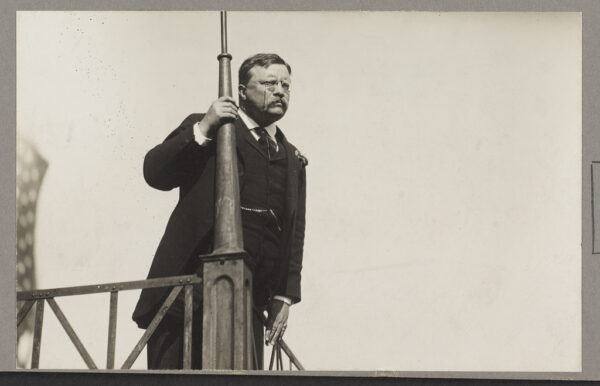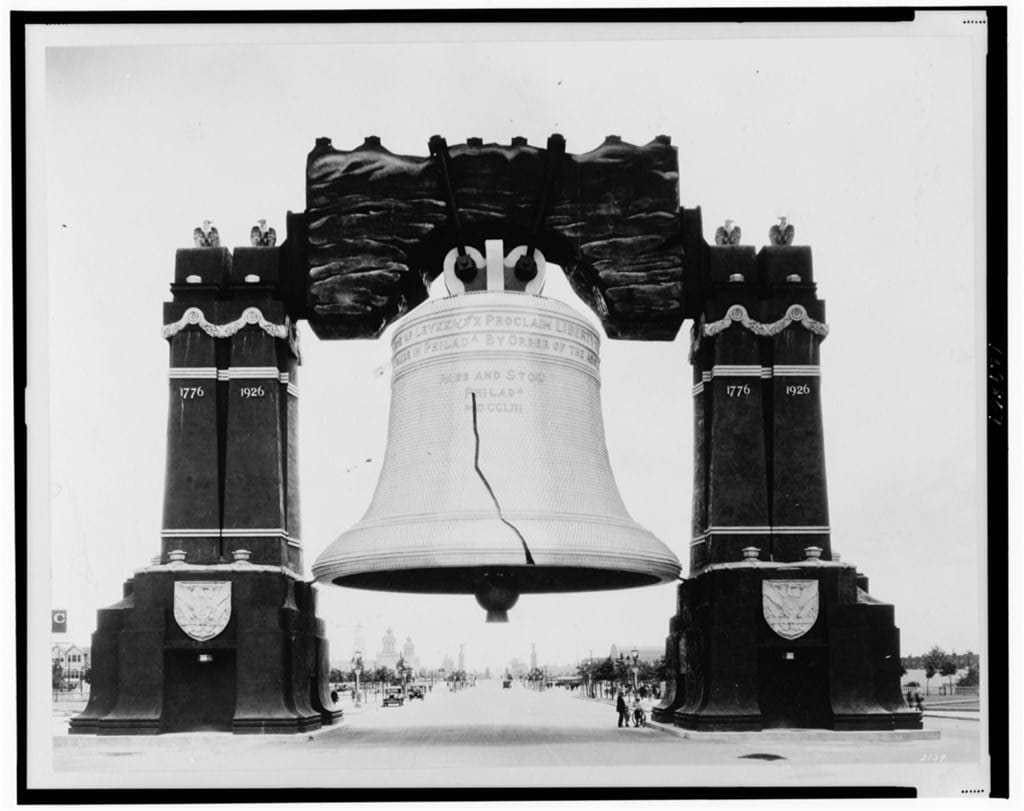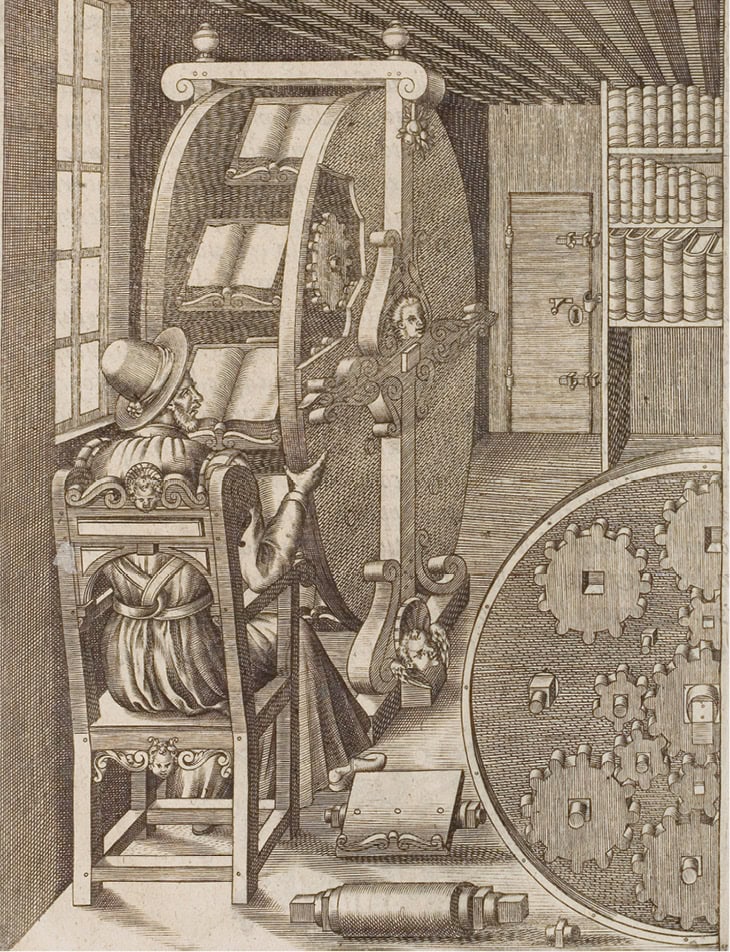The 1912 AHA annual meeting in Boston was unique: A political celebrity delivered the presidential address. Former US President Theodore Roosevelt served that year as the Association’s president. Only a month before, he had been defeated for reelection in one of the most spirited presidential campaigns in US history. Roosevelt was known for his unvarnished opinions, and he did not hold back. In his two-hour address, he lectured the gathered scholars on the need to reach multiple audiences through more engaging writing. That challenge still reverberates, as our discipline continues to struggle to deliver history to the public.

In his AHA presidential address in 1912, Theodore Roosevelt encouraged professional historians to write for the public. Library of Congress Prints
The nation was in the midst of the Progressive Era, a time of change and reform. As president from 1901 to 1909, Roosevelt enacted progressive measures to regulate railroads and protect the nation’s food supply. After he failed to capture the Republican Party’s nomination in 1912, he led the formation of a new Progressive Party. He campaigned on the Progressive ticket for women’s suffrage, an eight-hour workday, direct primaries, and national health insurance, all leading-edge notions.
The historical discipline was facing its own progressive moment. “From its inception, the American Historical Association contained . . . tensions between the past and future of history,” writes Robert B. Townsend in his history of the Association, History’s Babel. That was very evident by 1912. In the closing years of the 19th century, the field had included what Townsend calls “gentlemen or amateur historians,” who were not trained as historians but were skilled in the art of engaging writing. In the opening years of the 20th century, younger historians, many trained in recently established PhD programs, researched extensively in archives and other primary sources and wrote well-documented analytical, but not always publicly engaging, history. By 1912, they were called “progressive historians,” which aligned them with the era.
The AHA encouraged this professionalization, including the development of history PhD programs, more research in primary sources, and more history teaching in the schools. In 1912, the Association was facing a changing discipline: founded in the waning years of the “old” history but also reacting to and supporting the transition to newer methodologies.
In 1912, the Association was facing a changing discipline.
The Association was also campaigning to raise its public profile. In its first two decades, most of its presidents had been history professors and scholars, but recent presidents included well-known politicians, businessmen, naval officers, and others who had also written some respectable history. Roosevelt fit well in that distinguished queue. A historian of some note, his books included The Naval War of 1812 (1882); the six-volume The Winning of the West (1889–96); and others on New York City, Thomas Hart Benton, and his own adventures as an army officer in the Spanish-American War.
Therefore, late in 1910, the AHA approached Roosevelt to serve as vice president in 1911, which would mean automatic promotion to president in 1912. Roosevelt accepted. The AHA presidency would provide an acknowledgment of his own historical works by the historical discipline and provide a platform to expound on two of his beliefs: that good history should be eminently readable and that history should promote good citizenship.
Roosevelt’s presence made the 1912 AHA meeting a high-visibility event. Eight scholarly organizations—including the Mississippi Valley Historical Association (now the Organization of American Historians), the American Economic Association, the American Political Science Association, and the American Sociological Society—were also meeting in Boston. Attendance at the address ballooned to 450 people. Yet in retrospect, it is abundantly clear that the audience was circumscribed: The memberships of the AHA and its fellow societies were overwhelmingly male and white. In fact, the early 20th-century professionalization of the discipline had made it harder for women and for Black scholars to attain history teaching positions and publish scholarly books and articles.
Nevertheless, the crowd erupted in cheers as the ex-president entered the lecture hall. The Chicago Daily Tribune wrote that the scene resembled a political convention. “It is not very often that a historical society is enriched by a man who has not only written history but has also made history,” said A. Lawrence Lowell, the president of Harvard University (Roosevelt’s alma mater), in his introduction. Roosevelt’s address, “History as Literature,” was provocative and far ranging, showing TR’s deep mastery of history from the ancient to the modern United States.
Roosevelt hit on several themes. He argued that history needs breadth and depth but also color. “Full knowledge of a mass of dry facts and gray details” is essential, he said, but “the dryness and the grayness” are not nearly enough. Historians need to achieve “complete truthfulness” while still writing in an engaging manner. He acknowledged the work of the newer progressive historians, particularly their strategy of digging into primary sources. He insisted, however, that good history can and should also be good literature.
According to Roosevelt, history should relate to great leaders and events and mighty deeds, not “the drab monotony of the ordinary.” At the same time, the historian must “interest us in the gray tints of the general landscape no less than in the flame hues of the jutting peaks”; and “while doing full justice to the importance of the usual, of the commonplace, the great historian will not lose sight of the importance of the heroic.” Great historians, through vivid writing, should make readers feel like eyewitnesses. A good historian, he said, “will make us see as living men the hard-faced archers of Agincourt, and the war-worn spearmen who followed Alexander down beyond the rim of the known world.”
Roosevelt argued that it was essential for historians to present the great, heroic American story, highlighting “the change from a nation of farmers to a nation of business men and artisans, and all the far-reaching consequences of the rise of the new industrialism.” These histories should feature heroic figures. “A people whose heroes are Washington and Lincoln, a peaceful people who fought to a finish one of the bloodiest of wars, waged solely for the sake of a great principle and a noble idea” expect and deserve a noble history. He ended on a laudatory note. “When the tale is finally told, I believe that it will show that the forces working for good in our national life outweigh the forces working for evil, and that, with many blunders and shortcomings, with much halting and turning aside from the path, we shall yet in the end prove . . . that righteousness exalteth a nation.”
An enthusiastic reception in Roosevelt’s honor followed his speech, and commentary on the address soon ensued. James Ford Rhodes (AHA president in 1899) called it “a masterpiece.” J. Franklin Jameson, editor of the American Historical Review, which printed the speech in its April 1913 issue, commended the “political and literary fame” of the speaker and the “power and charm” of his address. Roosevelt himself considered it one of his best and included it in a book of essays.
Yet the wider response from professional historians was mixed. A few conservatives disagreed with someone other than a professional historian serving as AHA president. Others found the speech preachy. Here was a politician instructing the nation’s leading historical association on what sort of history they should be writing.
In the longer term, Roosevelt’s address contributed to the emerging discussion of the purposes and audiences of history. In the coming decades, he was cited as a pioneer in a new approach to history and “catching the trend of opinion,” as Homer C. Hockett wrote in a 1926 essay in . In the address, Roosevelt “uttered an eloquent plea in [sic] behalf of a movement which was already stirring the ranks of the historical guild.” In 1948, Samuel Eliot Morison wrote in History as a Literary Art: An Appeal to Young Historians that unfortunately “Roosevelt’s trumpet call fell largely on deaf ears, at least in the academic historical profession.”
What is the role of historians in educating citizens?
But eventually the discipline saw the value in TR’s call for more engaging writing. In his 1938 book, The Gateway to History, Allan Nevins insisted that “the world at large will sooner forgive lack of scientific solidity than lack of literary charm. The great preservative in history, as in all else, is style.” In his 1959 AHA presidential address, Nevins lamented that “with the demise of the romantic, unscientific, and eloquent school of writers, our history ceased to be literature.” He cited and endorsed TR’s verdict from 1912: “Scholarship that consists in mere learning, but finds no expression in production, may be of interest or value to the individual” but not to society, “unless it finds expression in achievement”—“when the scholar not merely receives or acquires, but gives” to a broad public audience.
Roosevelt in 1912 raised issues that Hockett, Morison, Nevins, and many other historians have wrestled with since: What is the purpose of history? How can history be more widely known and influential? How can we reach multiple audiences? What is the role of historians in educating citizens? Those questions are still essential, as Jacqueline Jones reminded us in her 2021 AHA presidential address, “Historians and Their Publics, Then and Now.” “By making stories about the past available to all sorts of publics,” she noted, “scholars seek to counter mythmaking and contribute to a broader educational enterprise—one that is essential to the future of history and, indeed, democracy itself.” Returning to Roosevelt’s address just might help historians of the 21st century think about how to approach the public today.
Bruce W. Dearstyne has taught history at SUNY Albany, SUNY Potsdam, and Russell Sage College and was a professor at the University of Maryland College of Information Studies.
This work is licensed under a Creative Commons Attribution-NonCommercial-NoDerivatives 4.0 International License. Attribution must provide author name, article title, Perspectives on History, date of publication, and a link to this page. This license applies only to the article, not to text or images used here by permission.


